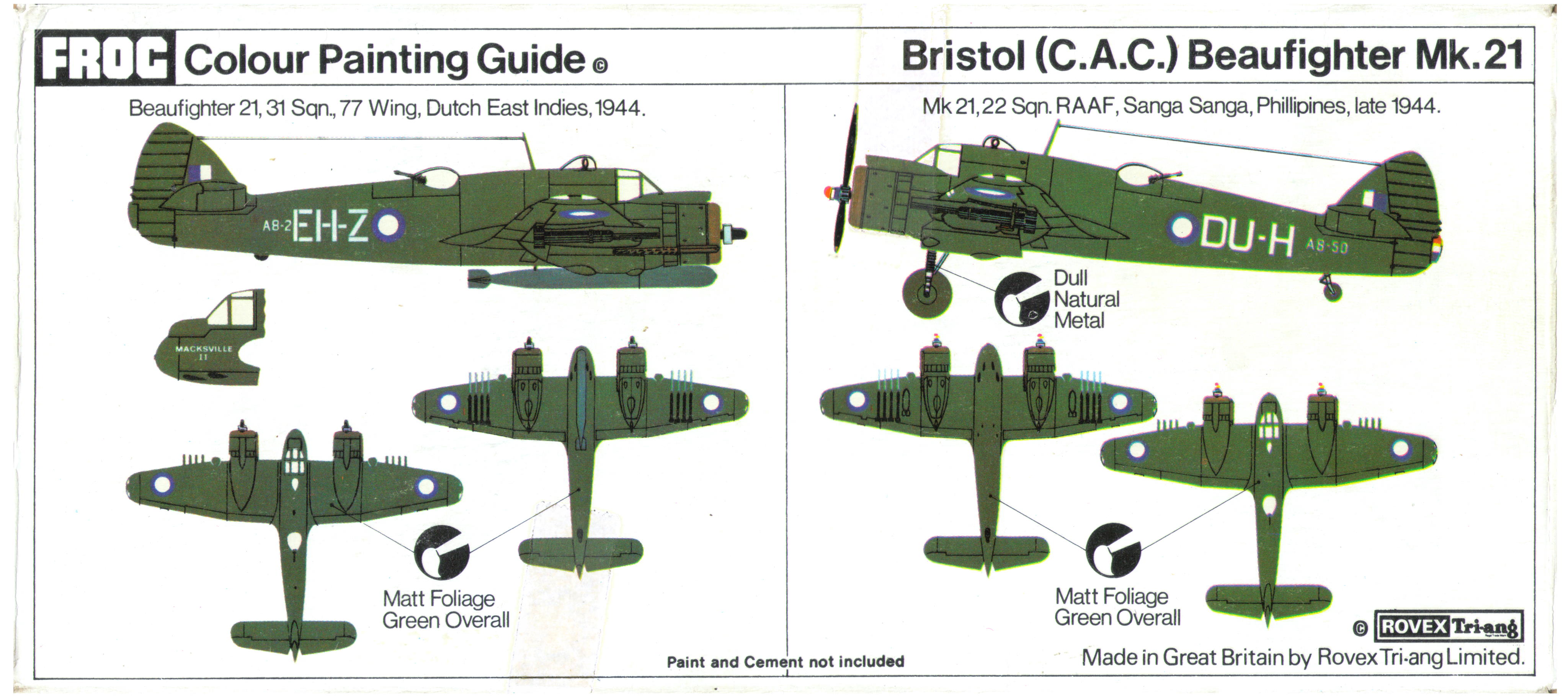



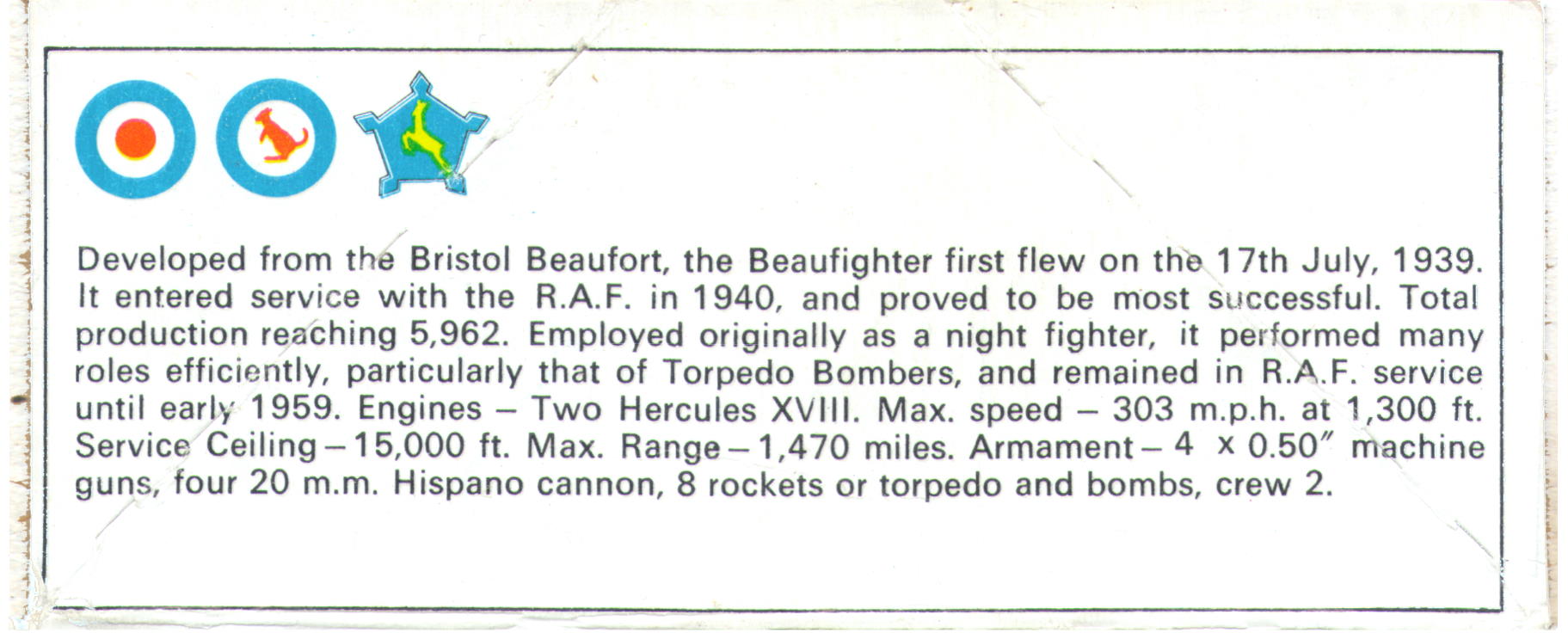
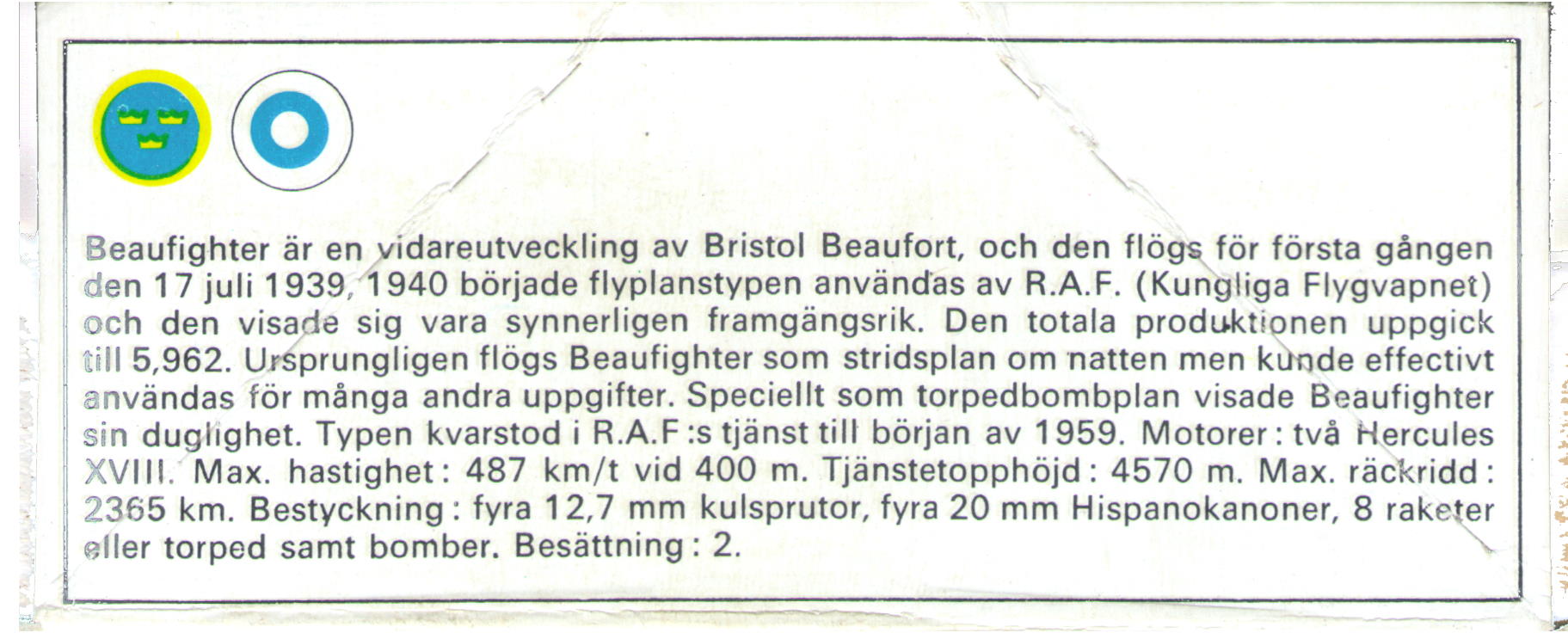
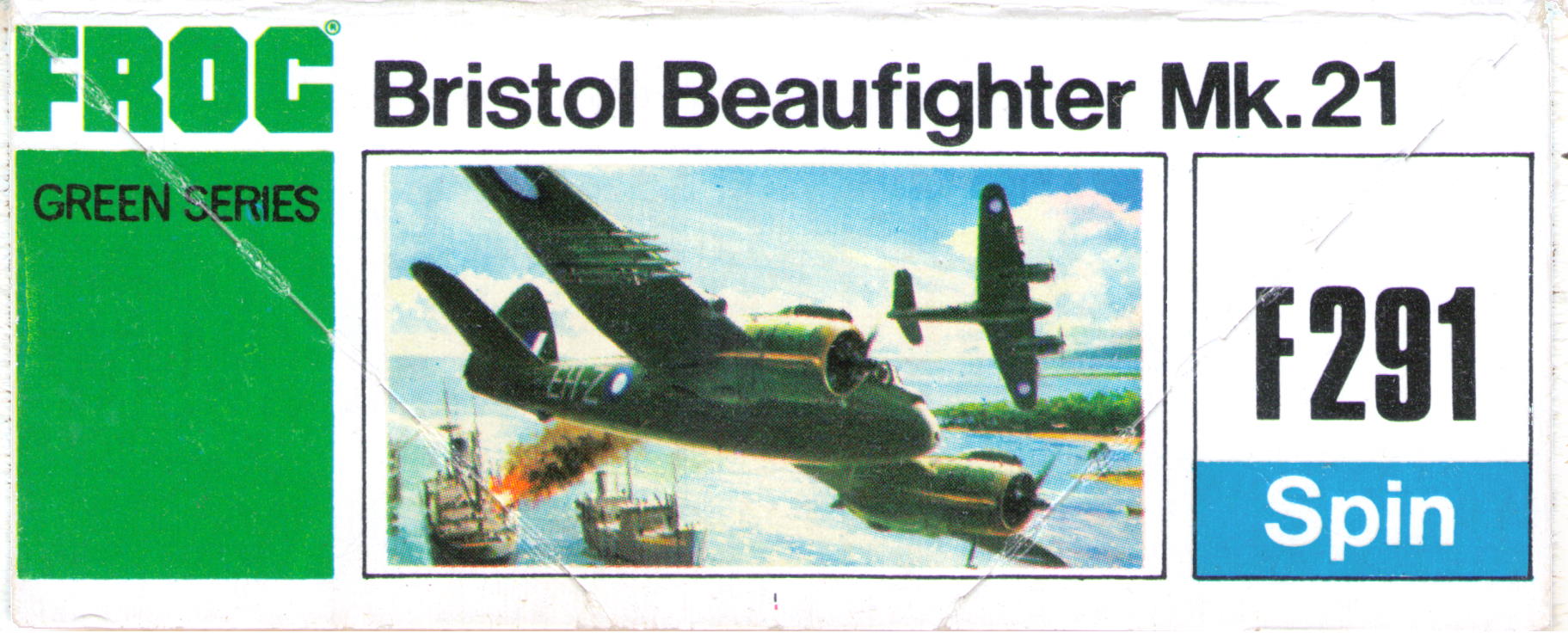
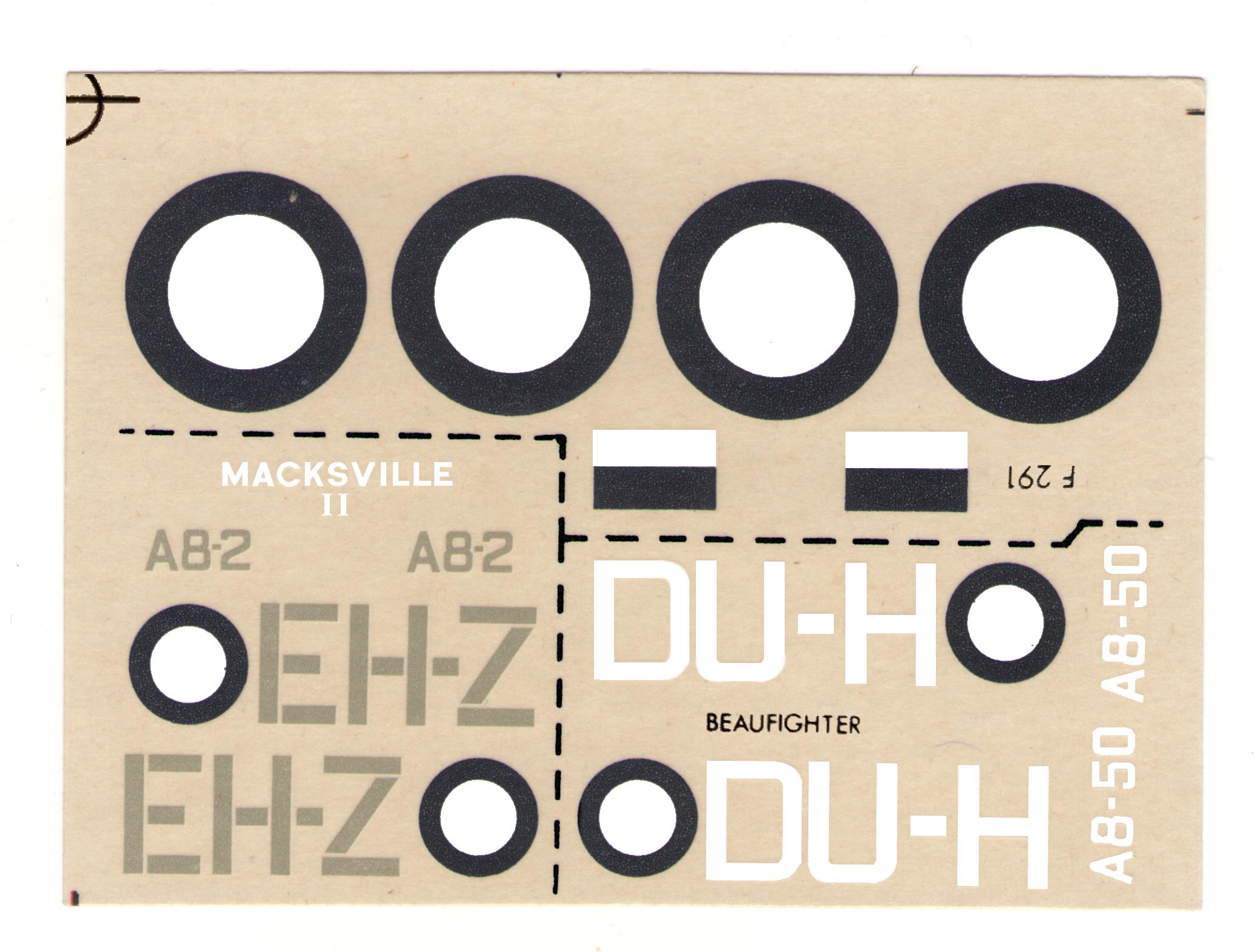
|
Bristol 156 Beaufighter IF/F.VIC/T.F.X/DAP Beaufighier 21
| F191 | 1969-1970 | G1(G) | 65000 | 3xRAF |
| F291 | 1971-1974 | G1(G) | 120000 | 2xRAAF |
| F291 | 1974-1977 | H(G) | 60000 | 2xRAAF |
This was the third kit to be retooled as a Spin-a-Ргор kit.
It was sold as such 1971-1974.
At the same time as it was converted to Spin-a-Prop the fuselage was also changed to represent an Ausiralian-built Beaufighter 21.
FROG model aircraft 1932-1976, R. Lines, L. Hellstrom
|
MODEL ENTHUSIAST
My wife doesn't understand me!
A Frog quartet
Released simultaneously by Frog were re-issues of three kits that have existed for some time but have now been redesigned for motorisation. To accompany them there is a set containing two tiny electric motors with the necessary wiring and copper connections. This is a first class idea, for which we award full marks. The kits concerned are Bristol's Beaufort and Beaufighter, and the Junkers Ju 88A-4, and the motors are 0-8 in (2,0 cm) in length and 0-45 in (1,14 cm) in diameter, and thus slip easily into 1/72nd scale radial engine cowlings. Their shafts are offset, which may enable them to be used for some liquid-cooled engine installations, though nacelles such as those of the Hornet are too slim to accept them. The motors are driven by means of a pen-light battery housed within the fuselage of the model (and accessible by means of a detachable panel in the fuselage underside) and are started and stopped simply by turning or stopping the airscrew. The price of the entire motorisation set is only 42½ pence in the UK, and we foresee a wide application for this clever device.
Turning briefly to the kits themselves, the Beaufighter is an excellent model, and has now been provided with the bulge forward of the windscreen that characterised Australian-built variants and an excellent new decal sheet for a Beaufighter 21. The Ju 88A-4 is a kit of older vintage, and suffers a number of inaccuracies, notably concerning the shapes of the wings and nacelles. The new decal sheet provides markings for examples of this aircraft that served both in North Africa and the Soviet Union. Oldest of the trio is the Beaufort, but it has stood the test of time well, and is generally a very good model if one throws away the atrocious engine cowlings and replaces them with suitable cowlings from another kit. Incidentally, despite the statement on the boxtop, the markings of neither aircraft provided by the decal sheet are those of a Beaufort II (W6476 was a Taurus-engined Mk I while A9-408 was a Twin Wasp-engined Mk VIII). The cowlings of the two types of engine were noticeably different, and the box art is in error in showing the Australian machine with the forward collector rings and long exhaust pipes of the Taurus installation.
W R Matthews
Air Enthusiast 1971-07 vol.01 no.02
|




